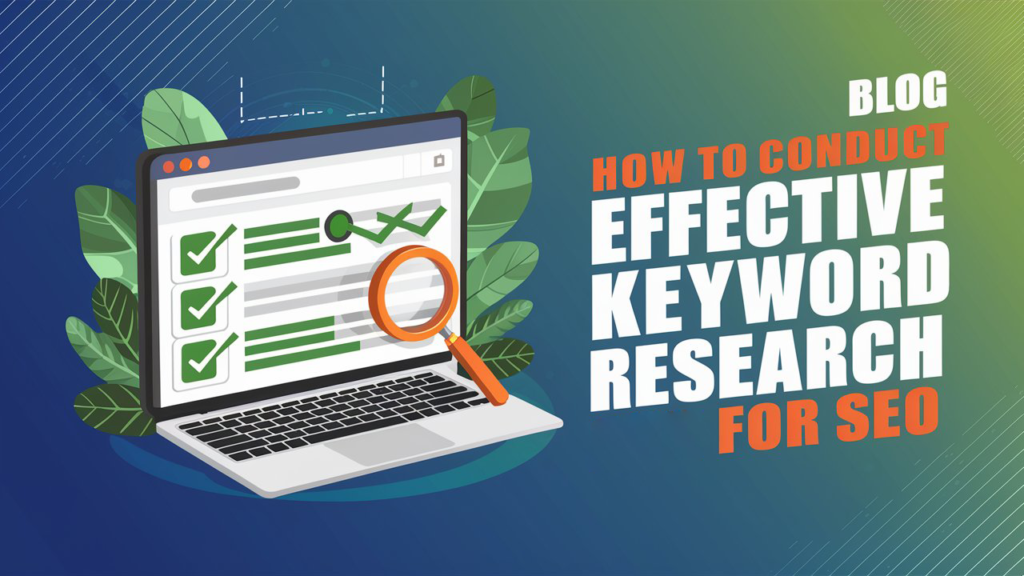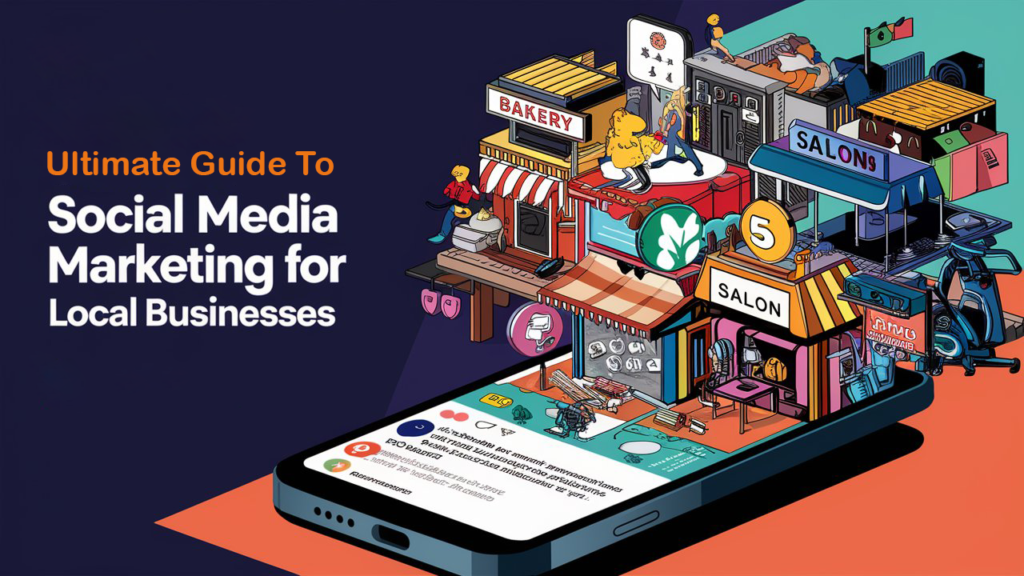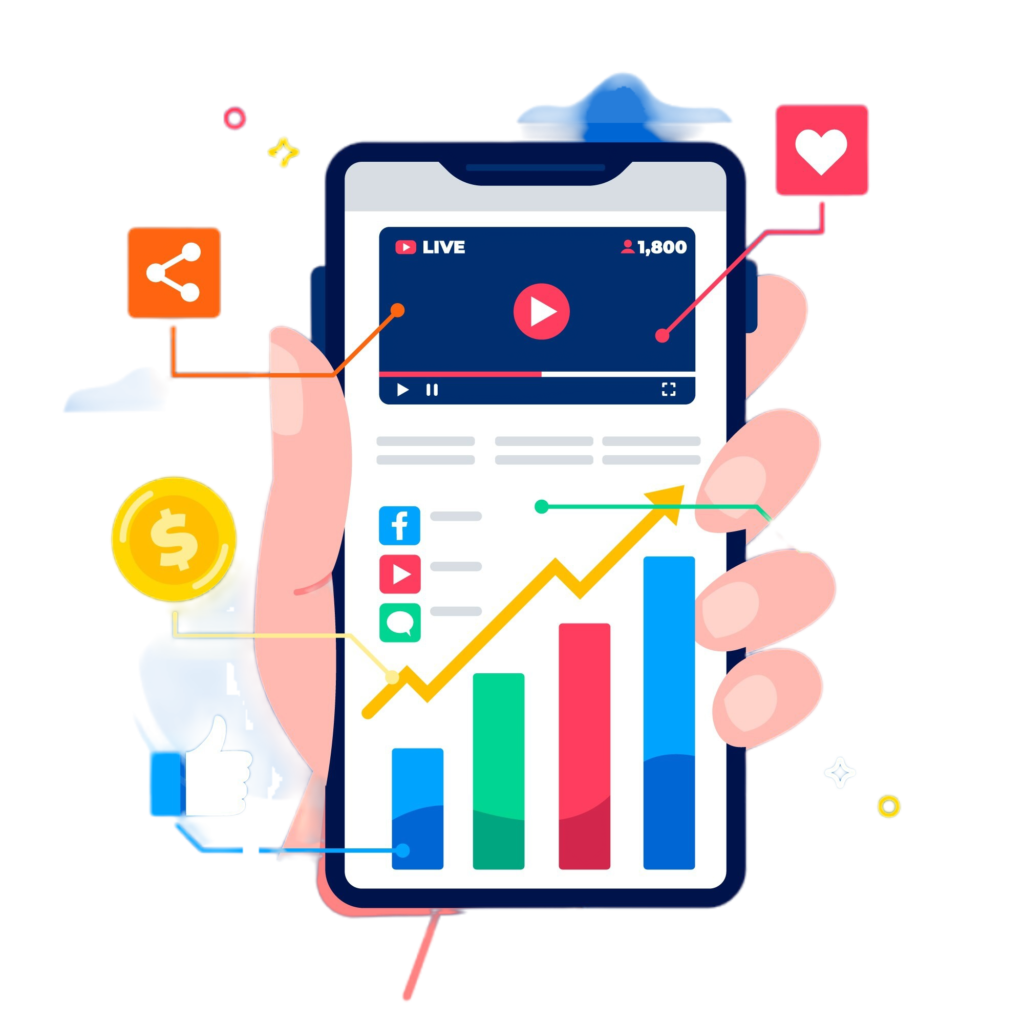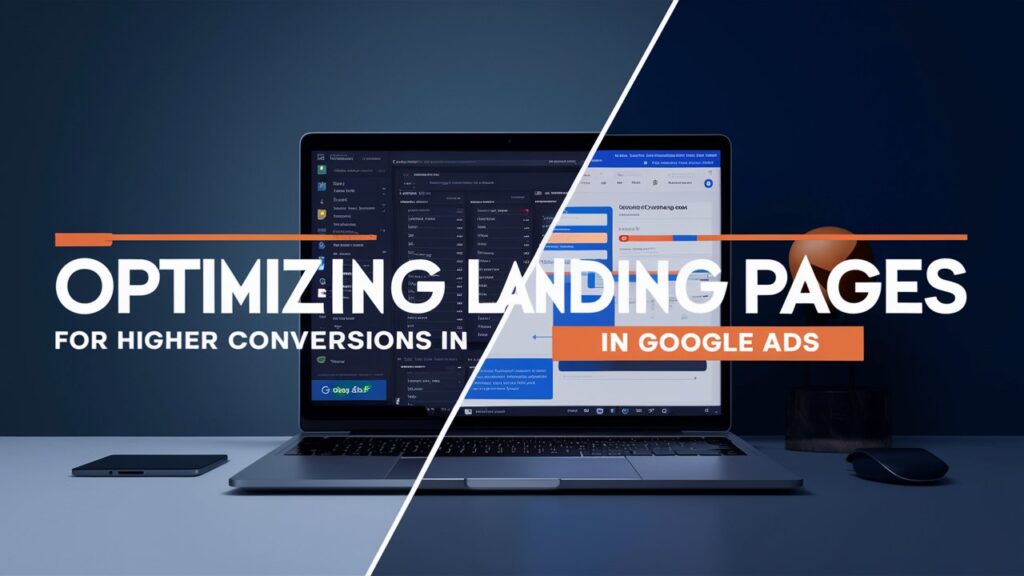How to Conduct Effective Keyword Research for SEO
How To Conduct Effective Keyword Research for SEO

Introduction to Keyword Research
Keyword research is the most important element of any SEO campaign. This means finding out the words and phrases your target audience would type in while searching for products or services, or seeking information your business has connections with. Knowing what these terms are can enable you to create content that moves up on search engines and drives more organic traffic to your website.
Essentially, keyword research allows for the understanding of an audience’s needs and behaviors. It is by the use of these very terms that you will meet where the users are and optimize your content for a better experience of the users with relevant and useful information, aligning their questions and problems, rather than purely improving ranks in search engines.
The major steps to effective keyword research are basically a few. First, generate a list of base keywords pertaining to your business. Once that is done—when you have your base list of keywords—it’s time to expand and filter using a tool like Google Keyword Planner, SemRush, or Ahrefs.
It is also recommended to use “long-tail” keywords because they offer less competition and bring super-targeted traffic with their more specific phrases. Instead of going after “shoes,” for example, you could go for “best running shoes for women.”
If you have planned for keyword research as a part of your SEO strategy, it can make content creation relevant for the targeted audience and help you rank on search engines.
Steps for Conducting Keyword Research
Effective keyword research begins with knowing your target audience and having clear goals. Knowing who your audience is and what you are getting at in the search results will help to guarantee a proper SEO strategy.
Understanding Your Target Audience
Define your Goals and Objectives
Analyzing Your Competitors
Getting ready in the right way is the best way to build a strong foundation for keyword research. If you do your research, you’ll be able to choose keywords that are important to your business goals and meet the needs of your target audience.
Preparing For Keyword Research
A well-planned strategy for researching keywords can make a big difference in how relevant and high-ranking your website is. Come up with a list of core keywords that are most important to your business area and the people you want to reach. Many tools, both free and paid, are available to help you find information about business, competition, and trends.
Further, look into the keywords that your competitors are using to find gaps and chances. With long-tail terms, you can get more specific search results, where there may be less competition, and more people who are interested in what you have to offer. When you’re planning to improve your content, keep an eye on how important keywords are, how often people look for them, and what they want.
Also, think about LSI keywords. These will make your content even more relevant in search results and help linked searches show up more often. Finally, use the keywords you chose easily in your web content. Let them flow freely through the title, subheadings, meta descriptions, and the body of the text.
Evaluating The Effectiveness of Keywords
To get the best search engine results and reach your target audience, you need to see how well the term is doing. A Good keyword analysis will look at key measures that help you figure out how they might affect your SEO strategy as a whole. Following are the factors to consider evaluating how effective a keyword would be.
Search volume
First, identify your audience's demographic information, interests, and online activities by conducting surveys, analyzing your website analytics, and engage with your audience in social media to get insights. This provides an understanding of their needs, preferences that help determine the kind of words they would use while trying to look for services or products that you deal with.
Competition
Competition is one of the factors that will determine how hard or easy it is for you to rank on that particular keyword. If the competition of a particular keyword is high that means that there are a lot of people trying to rank their website on that keyword which means your chances of ranking on that keyword will reduce. So try to choose keywords with low to medium competition.
Relevance
Make sure that your keywords are relevant to your content and the people you want to reach. This will help improve the user experience and get people more involved.
Click Through Rate (CTR)
If the CTR is high, it means that the keywords are definitely relevant to the search purpose and, by extension, the behavior of the people who are searching. This means that the more clicks, the higher the rank.
To get the best search engine results and reach your target audience, you need to see how well the term is doing. A Good keyword analysis will look at key measures that help you figure out how they might affect your SEO strategy as a whole.
Advanced Strategies for Keyword Research
If you want to improve your SEO, you can use advanced word techniques for research. When it comes to making your content more search engine friendly, Latent Semantic Indexing (LSI) keywords are a step above the basic tools. These are keywords that are tied to the main keyword in some way. They give your content depth by covering a wide range of search goals at once.
It’s also a good idea to look into special keywords that are relevant to specific groups of your readers. Finding a group of keywords that are less expensive but more important will help you get relevant traffic that actually buys. Tools for keyword grouping and topic modeling help you figure out the best way to do things and give you really useful information about search trends and how people act.
All of these advanced methods need to be constantly checked on and changed. With a lot of success metrics, you can keep your keyword approach up to date and keep getting exposure and engagement. By incorporating these ideas into the process of writing your content, you can be sure that every piece you write will connect with your audience and meet search engine standards for authority and usefulness.
Implementing Keywords In Your Content
Use keywords effectively by putting them into titles, tags, and meta descriptions in a way that doesn’t seem forced. The main term should be in the first 100 words of your piece so that search engines can figure out that it is relevant. To make the text easier to understand and avoid phrase stuffing, use versions and related words all over it. Keep in mind that information that users will find useful is also information that search engines will find useful.
Improve the term optimization in the picture alt text, URLs, and anchor text used for internal links. Keep improving your content based on performance analytics and changing search trends. Also, make sure your term strategy is spot on if you want to stay at the top of the search results. So, this means that you can use keywords to improve your SEO and get focused organic traffic to your website as long as you focus on user purpose and keep the flow natural.
Implementing Keywords In Your Content
- With the help of a keyword optimization strategy, a business can keep up its SEO performance. Track where keywords rank, changes in organic traffic, and click-through rates (CTRs). Track the measures that show which ones really bring in the traffic and sales you need with Google Analytics and Google Search Console.
- Check how well your keywords are working against your business goals on a regular basis. Make a list of the high-performance keywords that really help people find your site, and put them at the top of your list as you improve your content. Also, keep an eye on the ones that aren't doing well and either fix them or get rid of them and change them with ones that are.
- Update your keyword approach to reflect new search trends and changes to the search engine algorithms. You can use SEMrush or Ahrefs to look at the competition for that strategy and find new ways to target keywords at the same time. To reach niche groups and make your search results more relevant, use long-tail and semantic versions.
Conclusion
To put it simply, keyword study is an important part of any SEO plan. You can make content that speaks to your target group and shows up high in search results if you know how to choose your keywords well. Remember that keyword research isn’t just about finding the keywords that get the most traffic. It’s about finding the right words and sentences that fit your business goals and the purpose of your audience.
As you share your results, keep an eye on your keyword approach by measuring how well it’s working. Keep an eye on changes to algorithms and trends in your field to make sure you stay relevant. You can get more organic traffic and move up in the rankings if you use the targeted keywords in your content and make sure those pages are optimized.
Effective keyword study doesn’t happen just once; it changes over time, just like your business goals and the way the market works. For long-term results in building your online profile, you will then be in a better situation to get the most out of your SEO work.
The Ultimate Guide to Social Media Marketing for Local Businesses
The Ultimate Guide To Social Media Marketing for Local Businesses

Why do local businesses need social media marketing?
For every local business , Social Media Marketing is the most important way to sell themselves. Local customers can talk to a business directly, which builds a sense of community and shows appreciation for their support. Local customers can connect with businesses by seeing information, deals, or anything else that might be interesting posted on Facebook, Instagram, or even Twitter.
There is also more exposure to the brand in the local market through the main social media sites because they make it easy for customers to find businesses and make purchases. For digital marketing to work, you need to make sure that your ads are specifically aimed at groups of people in the area you are trying to reach.
The use of social media also helps with customer happiness because it lets you know what customers think and suggest and meet their needs right away. These kinds of conversations are great for them because they make them happier, and that happiness is one of the main reasons they’ll tell their friends about the products, which is very important for small companies.
Local businesses can reach their ideal customers through social media marketing without spending a lot of money. This leads to more success and growth in the area.
Setting Up Your Social Media Profiles

Setting up your social media accounts is a very important part of making sure your local business has a strong online presence.
1. Choose the sites that are best for your business and the people you want to reach. Facebook, Instagram, Twitter, and LinkedIn are the most famous. You should choose the one that works best for your business because each one has its advantages and disadvantages.
2. Now make sure your profiles are complete and correct by adding lots of information. So, even if you work on a few different platforms, make sure you use the same personal picture, cover photo, and business name to help people remember your brand. Make a bio or statement that is interesting and clearly shows the worth of your business. Make sure to include keywords for local SEO.
3. Include your business address, phone number, and a link to your website. This makes it easy for any possible customer to get in touch with you. Besides that, you could use the features that are specific to each platform, like Facebook’s “About” part or Instagram’s “Highlights” for goods, services, and customer reviews.
4. Lastly, finish your pages so they look professional. You can add good pictures and make changes often to keep people interested. Businesses of all sizes can build a professional and trustworthy online presence that attracts and keeps local customers by following the tips on how to set up and optimize their social media sites.
Creating Engaging Content for Your Local Audience

Find out what really interests people in your area by doing polls, responding to comments and messages from fans, and looking at the data from your social media accounts. You can also perform social listening activities, which is basically listening to your audience’s reaction to your content. You can check the rection of your audience on the previous content that you have uploaded. This will give you a rough idea about the type of content your audience prefers, which you should focus on.
Talk about useful and important content that is tailored to the interests of the area. You should tell people about events or news that are important to the community. People trust each other more and get involved in their communities more when they share user-generated material like pictures and reviews from customers.
Catch their attention with attractive pictures, videos, and slideshows. People are more likely to share and like these types of posts than others. Local companies can also easily get noticed by giving people a look behind the scenes at how they work, introducing their team, and sharing customer success stories.
In order to get more local users to interact with your posts, use local hashtags and geotags. You can get more people in your community to see your content by having contests or freebies that encourage people to “share” it and then “tag” your business in the post.
You can build an active, two-way following that will promote and support your business at the local level by constantly posting interesting, relevant local content.
Building a Community Through Social Media
In recent years, social media has grown into a tool that small businesses should learn how to use to get and keep customers. It means figuring out who your audience is and what they’re interested in, then sharing things that are related to those interests, like news, future events in the area, and content created by users with reviews from past customers.
Take part in votes, questions, and quick responses to all messages and comments. To build trust, this method will work, and fans will appreciate getting something extra in exchange for their work by giving them more value. Use geotags, hashtags, and local leaders to help you reach more people in your neighborhood.
A regular writing plan helps make sure that people are always interested and that there are different types of content. People are interested in stories, movies, and pictures because they keep them interested. Social media ads will also talk about live or online events that can bring people together.
Local businesses that want to grow and keep customers for a long time can do so with the help of active customers on social media, which is based on real connection and creating value.
Leveraging Local SEO with Social Media
A more advanced method to local SEO that works will be more useful if you have a social media plan. This can be a big way for local businesses to get more people by getting more attention online. To begin, make sure that your posts use local terms and hashtags. For local users to be able to find things more easily, it will need place names, neighborhood tags, and other events that happen in the area. You can be sure that only people in certain places will see your posts on Facebook and Instagram by using geo-targeted ads.
On your social media page, ask users to share where they’ve been and give you feedback. Good reviews make you seem more trustworthy and help your business rank higher in local search results. Work with influential people in the area to reach more people in the area. Influencers may tell their followers about your business if they trust you.
News stories, events, and partnerships with other local businesses are all regular posts that can be used in or are important to a local area. Not only does this keep people interested, but it can also show search engines that your business is still going strong in the area. If you use this mix of local SEO strategies along with an interesting social media campaign, you’ll get more people to look at your business and find ways to engage local customers.
Promoting Local Events and Offers
Promoting your business on social media can really help it stand out and get involved in the community. First, make sure you have some really interesting images and material ready that explain what’s so great about your event or offer. Add some local geotags and hashtags to reach more people in your area. Because they let you target specific people, platforms like Facebook and Instagram work great for advertising events in your area.
To get your audience attention, ask them to tell their friends about an event or to RSVP online. If you offer special deals or even a discount to everyone who clicks “Like” on your page or shares certain posts, it will get people excited and encourage them to join in. Most of the time, share live videos and stories with real-time updates and behind-the-scenes looks to keep them interested and excited about the event.
Share with influential people or groups in your area to get more people to see your efforts and give them respect. Lastly, use social media analytics to track how well your efforts are doing. This will help you figure out what works best and how to improve your future plans.
Measuring the Success of Your Social Media Efforts

People can measure their social media success by seeing what effect their efforts had and how they could be improved in the future. Engagement rates, like “likes,” shares, comments, and tweets, should be kept an eye on because they show how well your content goes over with your audience. Watch how many more people follow your business to see how much it has grown and become more popular over time.
Watch for a rise in fans to see how much your brand’s fame has grown over time.
Track the traffic to your website that comes from social media with tools like Google Analytics. It will give them an idea of how these social networks work with other projects to boost your online visibility in general. But it’s very important to track conversion rates, like the number of signups, sales, or questions, to see if your social media efforts are really helping your company.
You should also use social media tracking tools in your content, like Hootsuite or Sprout Social, to get more specific information about how well it’s doing. These will give you reports on your audience’s demographics, how well your content is doing, and participation trends that can help you make any plan better.
By regularly checking these numbers, you’ll know what’s working and when to change your strategies to make your social media marketing even better. Measuring success isn’t just about the number; it’s also about getting to know your audience better and improving your relationship with them so that you can reach your business goals.
Tips for Sustaining Long-Term Success
For local social media marketing to really work, you have to be consistent and open to change. Keep people interested by sharing often. You could use a content calendar to plan your posts so that there is always a mix of promotional, informative, and interesting ones. After you answer, you should leave notes or send messages. This builds a group and trust.
It lets tools like Google Analytics track it more and gives you a true in-platform speed insight. Keep track of your key metrics for success on social media to see what works and what doesn’t. These could be contact rates, following growth, conversion rates, or something else. This method is based on data, which lets the techniques be changed so that one stays useful.
Follow trends and get news about new features on the sites that matter. Since you know that social media changes every day, you need to be able to shift to use new features and trends. Lastly, use ads, or paid posts, to get more views and reach more people. It’s important to do this before important business or marketing events. A mix of natural efforts and focused ads like that will help your local business grow and be successful in the long run.
Conclusion
A social media marketing strategy is, to put it simply, an important tool for every local business for success in today’s digital marketplace. A business can have many useful choices for local connection, marketing reach, and client loyalty through platforms like Facebook, Instagram, and Twitter. Creating properly optimized profiles and regularly posting interesting material that uses local SEO strategies greatly improves and broadens a company’s online visibility. Additionally, social media can be used to drive traffic and revenue while promoting local events and deals. It strengthens the bonds with the community.
Social media marketing success can be made possible by the use of analytics tools, which allow companies to continuously adjust their tactics in order to get better results.
In summary, long-term success requires dedication, adaptability, and a commitment to engaging with the local audience while using social media. Local businesses can unlock the full potential of social media to grow their customer base, expand their reach, and achieve long-term success by implementing the tactics outlined in this guide.
Optimizing Landing Pages for Higher Conversions in Google Ads
Maximizing Google Ads Conversion By Optimizing Landing Page

Why Landing Page Optimization Matters in Google Ads
Landing page optimization is the best way to get the most out of your Google Ads. When someone clicks on an ad, the landing page is usually the first thing they see about the brand. Your conversion rates will probably go up and your projects will give you a much bigger return on investment (ROI).
With an optimized landing page, it’ll be easy and quick for people to find what they need. Clear messages, catchy headlines, and strong calls to action (CTAs) will all help get people to do what you want them to do, whether that’s to buy something, sign up for your email, or something else.
A well-designed entry page makes it easy for people to find their way around. This not only keeps users on your site longer, but it also cuts down on “bounces.” Other important things to keep people and encourage sales are fast loading times and styles that work well on mobile devices.
But the main thing that can be said is that landing page optimization is one of the most important parts of running successful Google Ads campaigns. Working on user experience, relevance, and speed will likely help you get more sales and a higher quality score. This will also make your ads work better overall.
Key Elements of High-Converting Landing Pages
An Interesting Title
The headline is the first thing people will read. It needs to be clear, brief, and relevant, or it could solve a problem that the user is upset or hurt about. People will be more likely to read the rest of the information if the headline is good.
Short And Clear Ad Copy
The text on your landing page needs to be clear and easy to understand. Write down the most important benefits of an offer, like how the answer will help the user solve a problem. Use bullet points and short lines to make the text easy to read.
Strong Calls to Action (CTAs)
Add a strong call to action that makes people want to do something. Use wording that makes people want to take action in your CTAs, and then use color contrast to make the buttons stand out. Place them in smart places on the page.
Add social proof and trust signs
These can be things like customer reviews, recommendations, case studies, and trust badges. Add as many as you can. Such a product or service w
Mobile-friendly design
Most people who visit websites do so on their phones. Responsive and mobile-friendly design is no longer a suggestion, it’s a must. All screen sizes should be able to see and use your home page without any problems.
Faster Loading Speeds
People will leave a page that takes too long to load. For your landing page to load quickly, make sure your images are optimized, use browser caching, and make sure you have a solid hosting service.
Enhancing User Experience on Landing Pages

The user experience on the home page is the most important thing that can be done to improve the success rate of any Google Ads campaign. A landing page that is very well organized will not only bring people there, but it will also keep them there until they do what you want them to do.
First, make landing pages load faster and work better. This will help lower return rates and keep people on the page longer. After all, a slow page is the worst thing for users.
Second, make it easier for users to find what they want by reducing clutter and making browsing easier. This will make the journey smoother.
Personalization is a pretty important part of the user experience. If the information on your landing page is relevant to the wants and interests of your audience, it will be more interesting and relevant. Many people visit websites on their phones, so make sure all of your home pages are mobile-friendly.
By paying attention to these things, you can make landing pages that are easy for people to use and meet their needs so you can get more sales from them. Keep trying and improving your landing pages to make the user experience better and get the most out of your Google Ads strategy.
Tools and Resources for Landing Page Optimization
Optimize the landing pages if you really want to get the most out of your Google Ads. These other useful tools and resources can help you get the most out of your landing pages to get the most conversions:
Analytics and Heatmap Tools
Figuring out what to change on the main page by looking at how people use it is essential. You can see how people use a website with tools like Google Analytics and Hotjar. These tools can help you find areas that need improvement by giving you data like bounce rate, session length, and click trends.
Landing Page Builders
A landing page doesn’t always need to be built by someone who is very good at writing. There are platforms like Unbounce, Leadpages, and Instapage that make it easy to create and try different landing page versions with drag-and-drop dialog boxes. A lot of builders come with pre-made themes and work with other marketing tools to make optimization easy.
Tools for Conversion Rate Optimization (CRO)
Testing and improving landing pages all the time is a good way to improve how well Google Ads work. Testing and improving your landing pages all the time could make your Google Ads work a lot better.
Additional Resources
Sign up for landing page optimization and digital marketing blogs to keep learning and stay motivated. You can trh Moz, HubSpot, or ConversionXL, where you’ll get access to tips, case studies, and best practices that will help you keep up with the latest strategies and trends.
Monitoring and Analyzing Performance Metrics

Tracking Conversion Rates
The conversion rate is likely the most important KPI for figuring out how well a landing page works. For example, it means getting more people to do something you want them to do, like buy something or fill out a form. This will help us figure out if our attempts to optimize are working or not. If you want to know what your users can do with tools like Google Analytics, you need to set up conversion tracking. Heatmaps are used to look at how people use websites.
Heatmaps portray on-site behavior users are engaging in on your landing page, highlighting the most clicked and scrolled areas, and the section where users stay the longest. From this information, you will be able to perceive what attracts their attention and what might be causing friction of some sort. Some of the most popular heatmap tools include Crazy Egg, Hotjar, and Mouseflow.
Bounce Rate and Average Session Duration
If the landing page has a high bounce rate and users leave quickly, it may mean that the page is not interesting or important to them. Because it rates them, this would show you if your content matches what people expect. It’s possible that more interesting headlines, stronger calls to action, or more useful material would be needed when engagement is low.
Form Submission and Interaction Metrics
For landing pages with forms, it’s important to keep an eye on how many people submit them and how many people connect with them. If you look at how often the areas are filled out or left blank, you can learn about how easy or hard the form is to use in general. In this case, making the form easier to fill out or giving rewards will get more people to send it in.
Conclusion: Get More Conversions Using Optimized Landing Pages
One of the most important things you can do to get more results from your Google Ads campaigns is to make sure your landing pages are optimized. A good landing page will grab the visitor’s attention and then lead them easily to the action you want them to take. When important things like catchy headlines, clear and concise writing, a strong call to action, and trust signs are taken into account, the user experience gets a lot better, which increases the conversion rate.
Make sure the page works well on mobile devices and runs quickly if you want to keep people on the page and get them to interact with your content. To find the best fit for your audience, you should always be A/B trying these features to make sure they work best. Heatmaps, analytics tools, and conversion rate optimization (CRO) will help you make choices based on data, which will lead to better landing pages.
Case studies of real-life situations show that landing page conversion rate optimization can make a huge difference for businesses. The results speak for themselves when it comes to everything from improving the design to speeding up the performance with data.
That is, getting more sales by optimizing landing pages combines design, usefulness, and constant improvement, which are all long-term goals. Use these best practices in your Google Ads efforts to make the user experience more engaging and effective, leading to a higher return on your investment. Make changes to your landing page right now and see how it can help your digital marketing.



